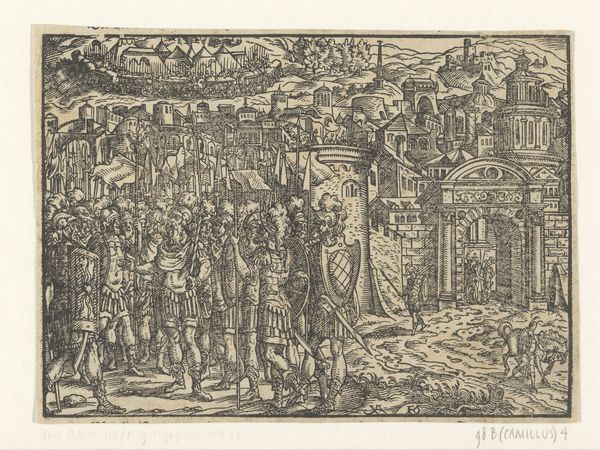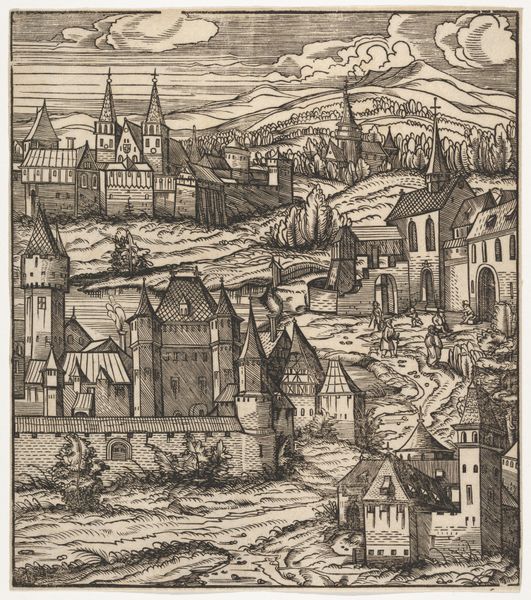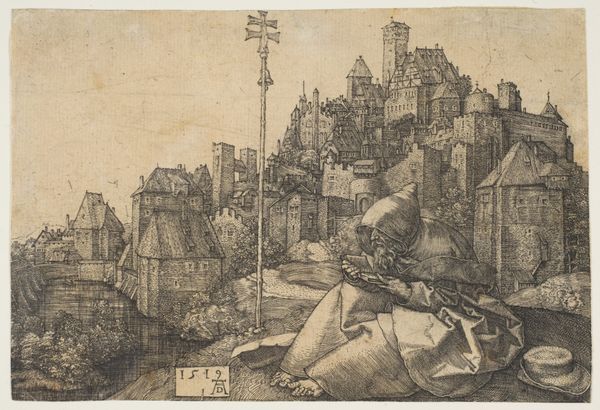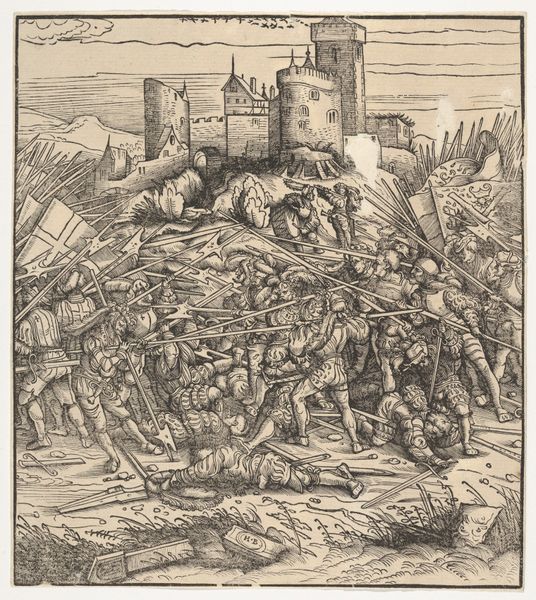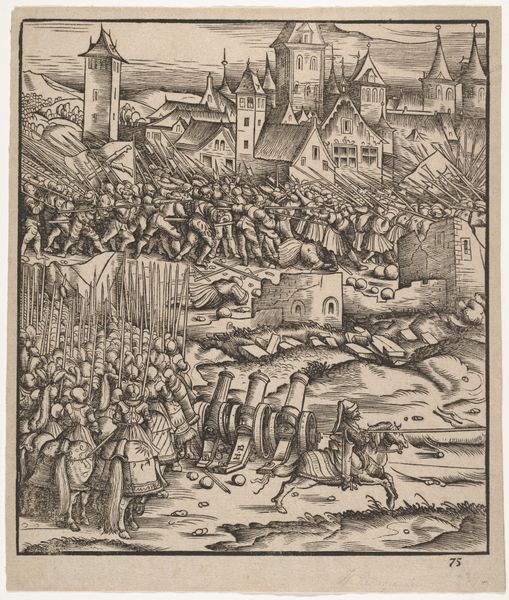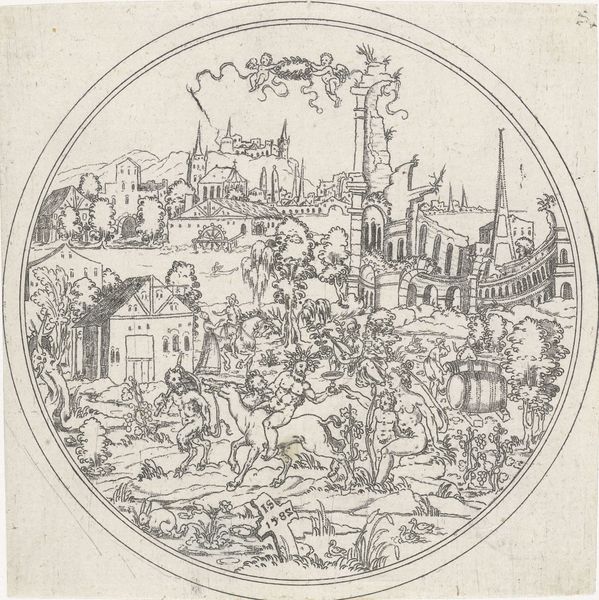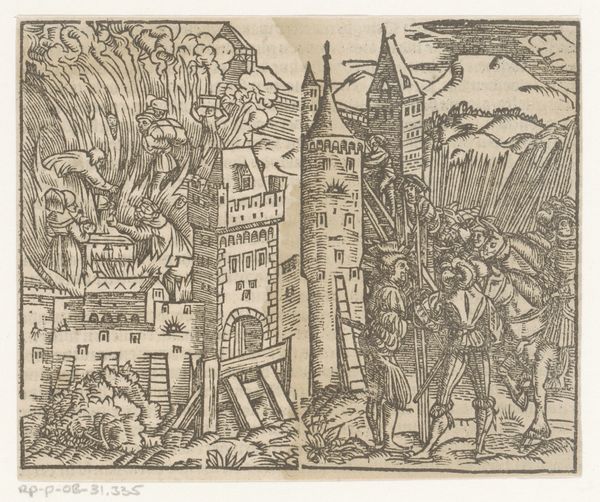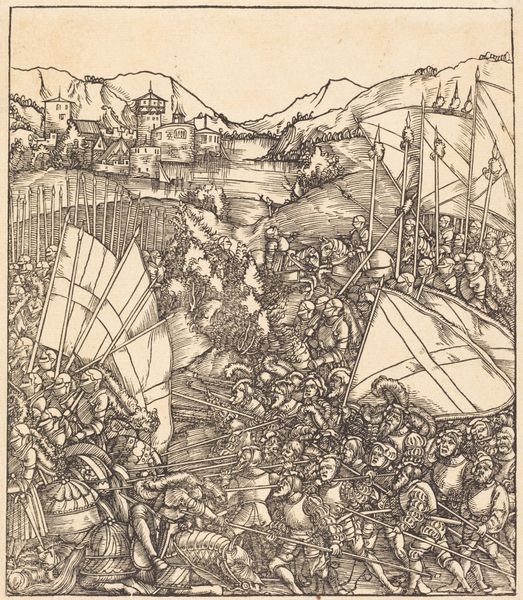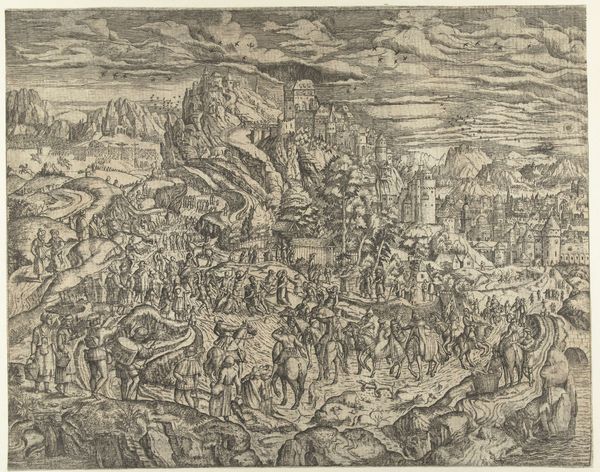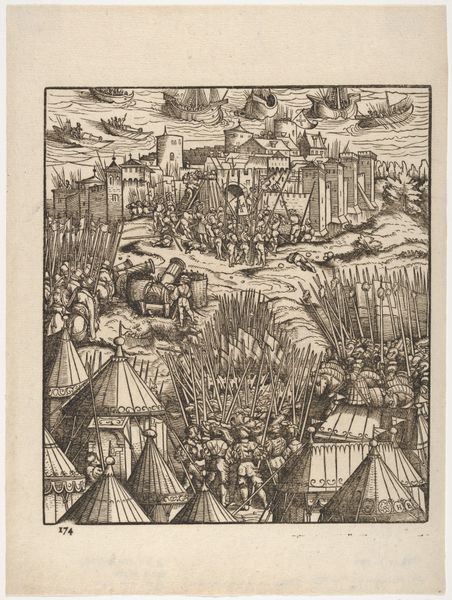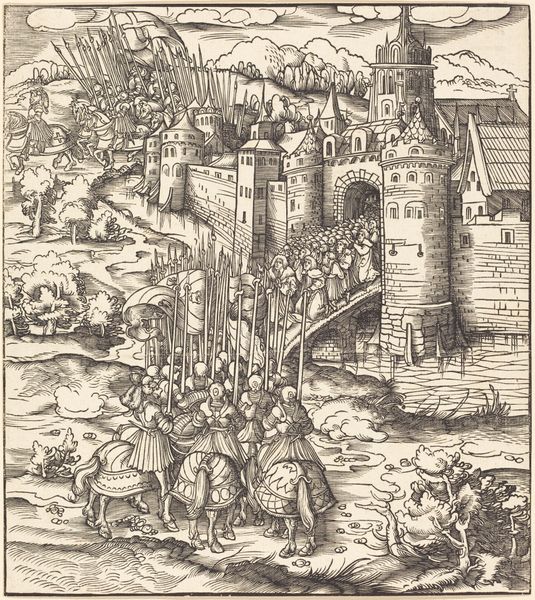
print, woodcut, mural
#
medieval
#
pen drawing
#
mechanical pen drawing
# print
#
pen illustration
#
pen sketch
#
landscape
#
personal sketchbook
#
pen-ink sketch
#
woodcut
#
pen work
#
sketchbook drawing
#
cityscape
#
history-painting
#
storyboard and sketchbook work
#
sketchbook art
#
mural
Dimensions: height 152 mm, width 152 mm
Copyright: Rijks Museum: Open Domain
Curator: Looking at this print, one is immediately struck by the chaos and energy rendered in such meticulous detail. Editor: Indeed. "Bestorming van een stad met op de achtergrond een legerkamp," or "Storming of a City with an Army Camp in the Background," was created in 1541 by an anonymous artist, likely as a woodcut or other type of print meant for wide distribution. Curator: You can almost feel the pressure of the siege. The material used in creating these types of prints and artworks was likely cheap so it could get into more people's hands, no? Editor: Absolutely. These prints often served as visual propaganda or news dissemination. The choice of woodcut, with its relatively simple carving process and ability to produce many copies, speaks to the urgent need to spread information – or perhaps a specific viewpoint – regarding the events depicted. We can also think of printmaking, versus painting, as more akin to a "working-class" medium. Curator: Consider how the composition guides the viewer’s eye from the fortified city to the teeming army camp, highlighting the scale of the conflict. The material of printmaking, itself, speaks to the message. But it is hard to tell whether it is a victorious conquest or the last throes of a desperate siege? Editor: That's precisely where the ambiguity lies and why understanding the print's circulation context is so important. Is it intended to glorify military power, warn of impending invasion, or even critique the brutality of war? Its display location, as a museum piece now, removes it from those former, potent connotations of real events and power dynamics. Curator: One could examine this piece with new eyes if we were able to understand its relationship to warfare in the period, itself. And of course, its placement inside our institutions shapes its understanding even now. Editor: Agreed. Thinking about distribution methods also is fascinating – imagine this tacked up in a tavern, a nobleman’s study, perhaps even used as instructional material for military training! All those contexts would drastically change how this material image speaks to its audiences. Curator: Ultimately, this piece reminds us of how even seemingly simple materials can become powerful tools in shaping public opinion. Editor: And how viewing this print shifts our focus on not just the visual skill in its making but to considering its power in medieval visual culture.
Comments
No comments
Be the first to comment and join the conversation on the ultimate creative platform.
